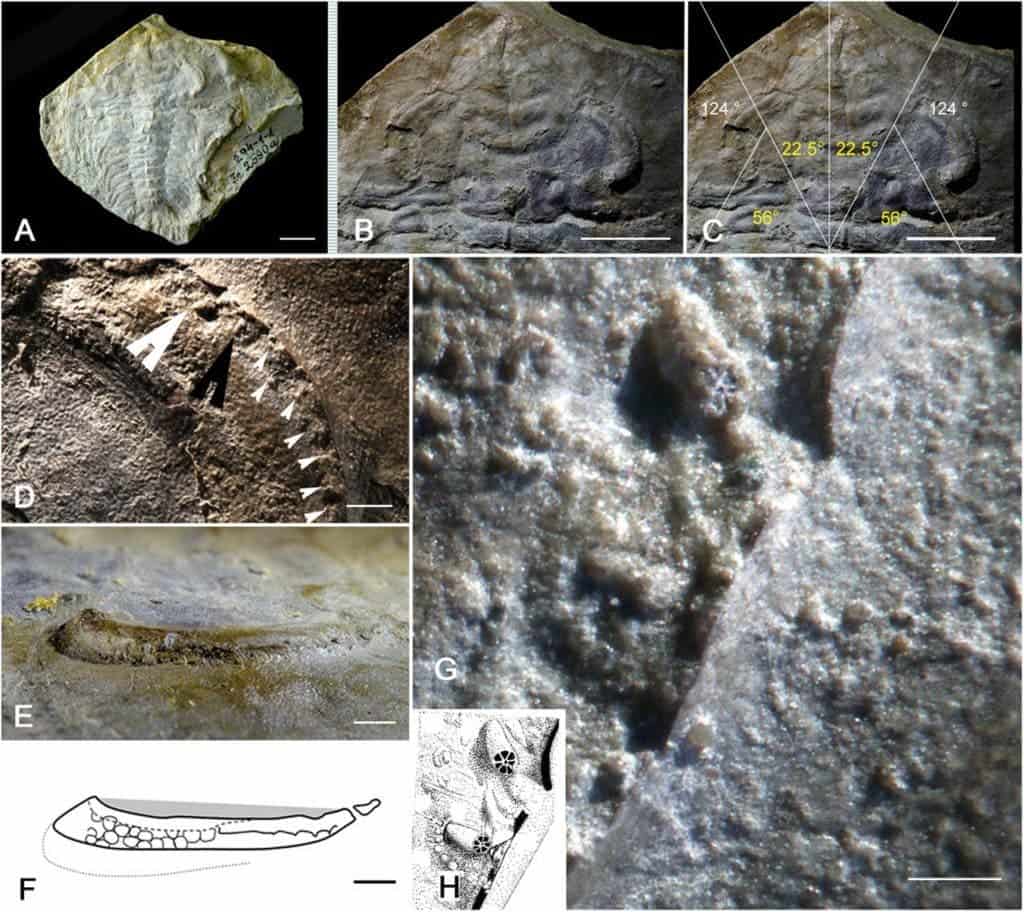A newly-discovered fossil may contain the oldest eye ever found, a new paper reports.

Image credits Euan Clarkson et al., 2017, PNAS.
An “exceptional” find offers us a unique glimpse into the evolutionary history of the eye. A 530-million-year-old fossil discovered by an international team of researchers could contain the oldest such sensory organ we’ve ever seen, they report. The trilobite (species Schmidtiellus reeta) sports an early model of the eyes still used by many animals today, including crabs, bees, and dragonflies.
Between 541-251 million years ago, during the Paleozoic era, the ancestors of today’s spiders and crabs were enjoying the time’s oceans and seas. They used an early form of compound eye to help them navigate — an organ consisting of tiny visual cells laid out in an array. Judging from the one found in the fossil from Estonia, their eyes were quite similar to what you might see on a modern bee. The team behind the discovery said their findings suggest that compound eyes have changed little over 500 million years.
“This exceptional fossil shows us how early animals saw the world around them hundreds of millions of years ago,” said lead author Professor Euan Clarkson from the Edinburgh University.
“Remarkably, it also reveals that the structure and function of compound eyes has barely changed in half a billion years.”
Only the animal’s right eye was found, and it was partly worn away, which gave the researchers a clear view of its interior. This made it easy for the team to record the details of its internal structure and function, as well as facilitating its comparison with modern compound eyes.

Image credits Euan Clarkson et al., 2017, PNAS.
The team believes that the animal had poor vision compared to many animals today, but the eye was very likely more than enough for the trilobite to see predators and obstacles. It consisted of approximately 100 cells (called ommatidia), spaced farther apart than those in contemporary compound eyes.
Unlike most eyes, however, the fossil eye doesn’t have a lens. The team thinks this is because of the species relative primitiveness, as it lacked parts of the shell needed for lens formation.
“This may be the earliest example of an eye that it is possible to find,” said Professor Brigitte Schoenemann of Cologne University, the paper’s co-author. “Older specimens in sediment layers below this fossil contain only traces of the original animals, which were too soft to be fossilised and have disintegrated over time.”
According to the team, a more advanced compound eye capable of capturing images in a higher resolution developed in another trilobite species from the present-day Baltic region a few million years later.
The paper “Structure and function of a compound eye, more than half a billion years old” has been published in the journal PNAS.


